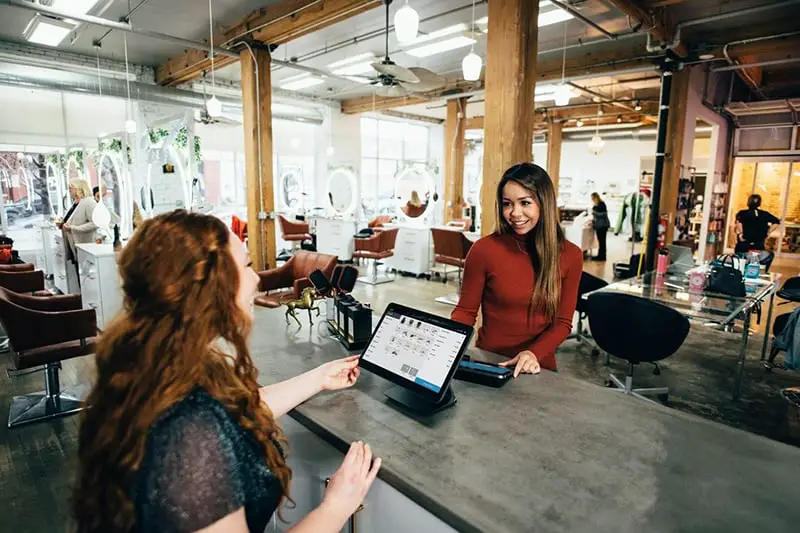Click here to get this post in PDF
Word-of-mouth is the secret sauce to business growth. You work hard to land those first few customers. You leave your business cards at restaurants, beg your friends and family to purchase, try every marketing campaign out there, make as many follow-up calls as you need to make, and finally, customers start rolling in. However, once you have clients to maintain, you don’t have the bandwidth to do the same thing you did to land those initial customers.
This is the point where referrals become necessary. Referrals aren’t just essential for your state-of-mind though, they’re a critical component to growing your business. People are four times as likely to purchase from you if a friend referred them. Additionally, word-of-mouth is the main factor behind 20-50% of all purchasing decisions. Plus, a whopping 92% of people trust referrals from their network.
Bottom line: you need a referral program. Many business owners think that simply asking your customers to refer their friends is enough. That’s not the case. You need a plan and a comprehensive program to ensure that you capitalize on the power of referrals.
Here’s how to do it.

Step 1: Make Sure Your Current Customer Experience is Top-Notch
To gain referrals, you need to make sure that your customer service and experience is worth recommending. If your products are duds or if your customers aren’t happy with what’s happening, they aren’t going to refer their friends and family. Think about your own life and how often you recommend products and services to your network. You don’t promote every product or company you use. You only talk about the experiences that are worthy of sharing.
Make sure that every part of the customer experience is above and beyond. It starts with a fantastic product or service, but their experience matters, too. If your website is hard to navigate or your customer support stinks, they aren’t going to refer you. Look at your customer retention and customer churn rates. If you don’t have loyal or returning customers, then you need to stay on this step until you do.
Step 2: Decide on Your Goals and Incentives
Identify your goals. You want more growth, but what does that mean? If you start with a general goal in mind, you’re setting yourself up to fail. Do you want more customers? How much growth do you hope to achieve? Start by identifying the value of your average customer. If your average customer spends $100, then your CPA or cost per acquisition (i.e., how much you can spend to earn a customer) needs to be less than $100. Say you spend about $50 in advertising to land each customer. That makes your CPA $50, and your profit per customer $50.
Once you identify your CPA, or what you’d like your CPA to be, then you can look at incentives. While it’s nice to think people will promote your business for free, most people need a little extra push.
How much can you spend to earn referrals? Refer back to your CPA. Many companies offer discounts as referral incentives. Say you offer a 20% discount per referral, and your average customer pays $100 per product, then each referral costs you $20, for a CPA of $20. Not bad, right?
Some businesses offer other incentives, too. Cash Visas, gift cards, social media shoutouts, free products, and more are common incentives. Just make sure to choose an incentive that your customers will actually be motivated by, and an incentive that makes sense for you monetarily.
Step 3: Create The Right Messaging and Delivery
Once you have your incentives laid out, you have to think about how you’re going to tell your customers about it. Create a landing page that lays out your referral program. Talk about how the program works, the incentives, and any other things your users need to know. Be sure to include the option to share the page on social media, too. Use compelling copy to entice your buyers to sign up. Keep it simple and make the landing page beautiful to look at and easy to navigate.
Then, figure out how you’re going to get the message out there. You can use several methods and should probably incorporate several. You can use newsletters, social media posts, email signature links, blogs, and more. Also, don’t ignore the power of human referral options. You can also use business cards, brochures, and phone calls to let your customer know about your referral program.
Once you decide how you’ll be getting the word out there, design any necessary material, like email templates, image graphics, etc. Now, don’t shoot out the message yet. There’s still more to do.
Step 4: Automate It and Enable Analytics
Figure out how you’re going to automate the referral program. There are several referral software solutions out there, but you need to decide which you’re using. These programs come with all the tools you’ll need to manage the back end side of the referral process.
While you might want to try to do it manually, don’t fall into that trap. You’ll need to have a way to track who referred people. You’ll need to track how much those referred customers spent. You’ll need to make sure that your customers aren’t abusing your referral system. Additionally, you’ll need analytics to track the effectiveness of your program. Remember the CPA we talked about earlier? You don’t want to waste your budget on a referral program that’s not working to win loyal, paying customers.
Moreover, once your program is effective, you’ll need to be able to scale it an let it run on its own. So, set up your automation and analytics before you reach out to any customers.
Step 5: Reach Out and Implement

Once you’ve completed the above steps, you’re ready to go. Start first by identifying your most loyal customers. Make them your test subjects. Reach out and tell them about your exciting new referral program. Starting with your most dedicated customers allows you to work out any kinks before rolling it out to everyone.
Once you’re satisfied, fire out the messages, post the posts, and start offering referrals to all your customers. Encourage your employees to ask for referrals after a positive experience. Get in the habit of promoting the referral program like you promote everything else. You can mention the program at the end of customer service calls, on purchase receipts, at the end of a transaction, and more. Every interaction is an opportunity to promote your referral incentive program.
Use your automation platform to scale it out and track your analytics to make sure that it stays profitable. Remember to adapt as needed. If you start having customer service or experience issues, or if you see the program isn’t working, take the time to adjust.
Follow these steps to create a referral program in your business. Doing so will expand your customer base and increase the value of your company in no time. Pretty soon, you’ll go from a small business to a large one, and you’ll have a slew of customers ready to share the word.
You may also like: These 6 Mistakes Will Destroy Your Referral Marketing
About the Author
Matt Lee is an accomplished marketing consultant and blogger. He helps business owners learn modern marketing tactics and provides tips on how to sell your business to get paid maximum value.

[…] method that works with networks, unlike traditional marketing, where communication is linear. Referral marketing communications usually branches out like a tree. In conventional marketing, you have two actors: the business […]